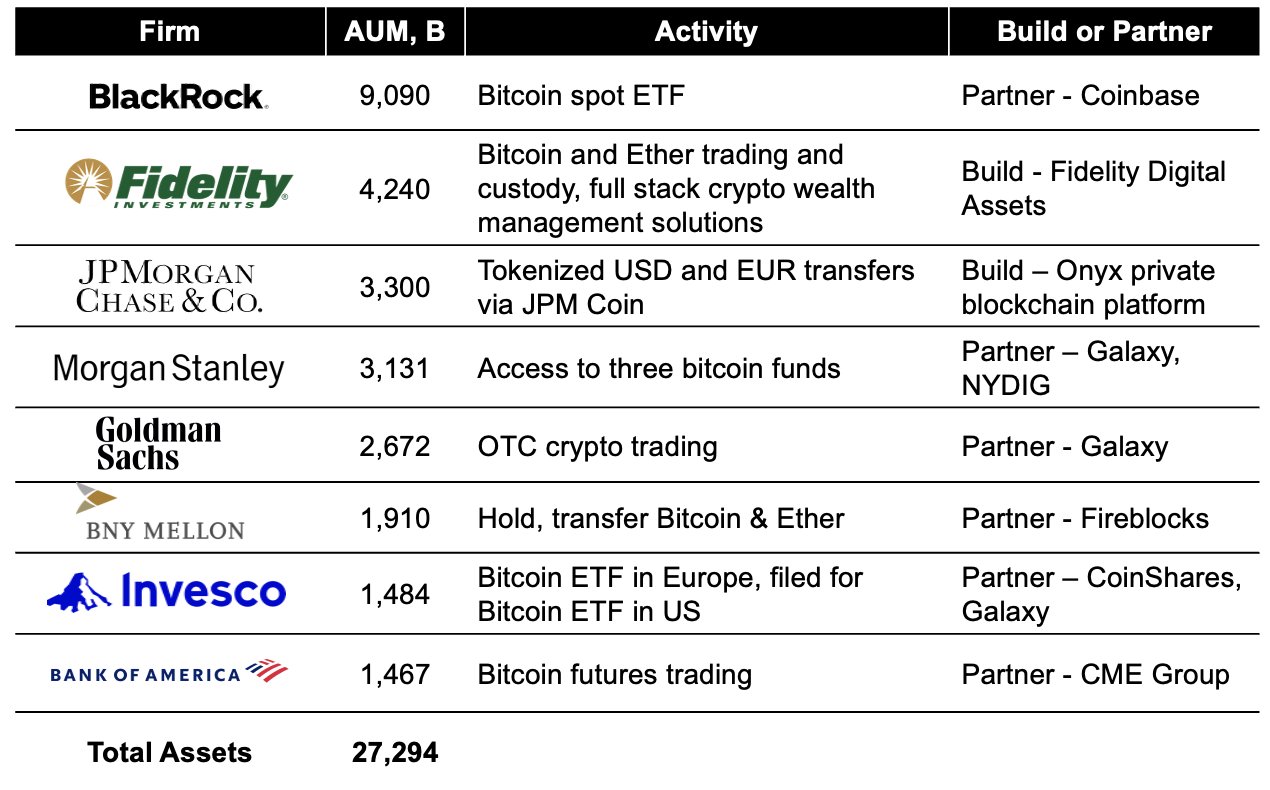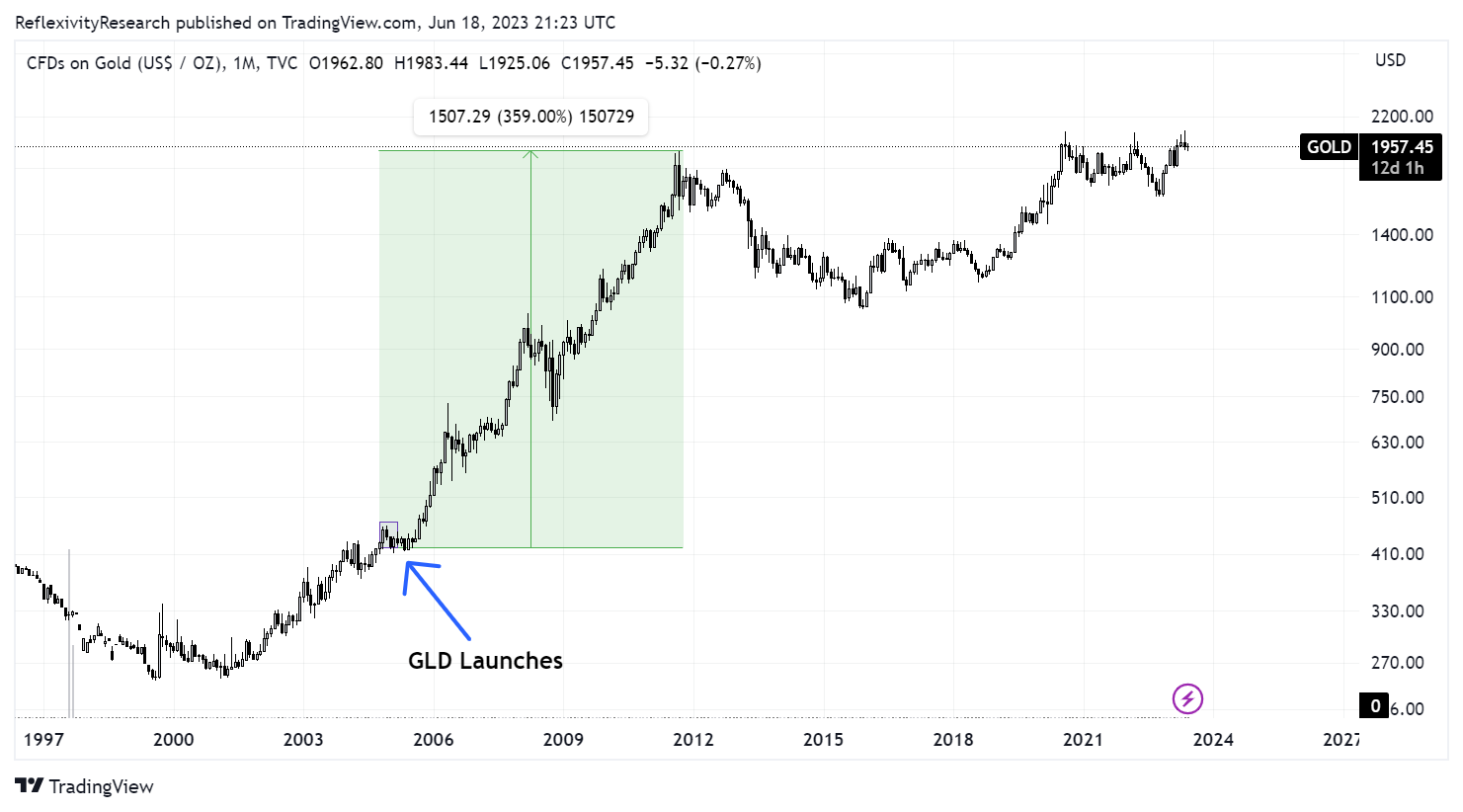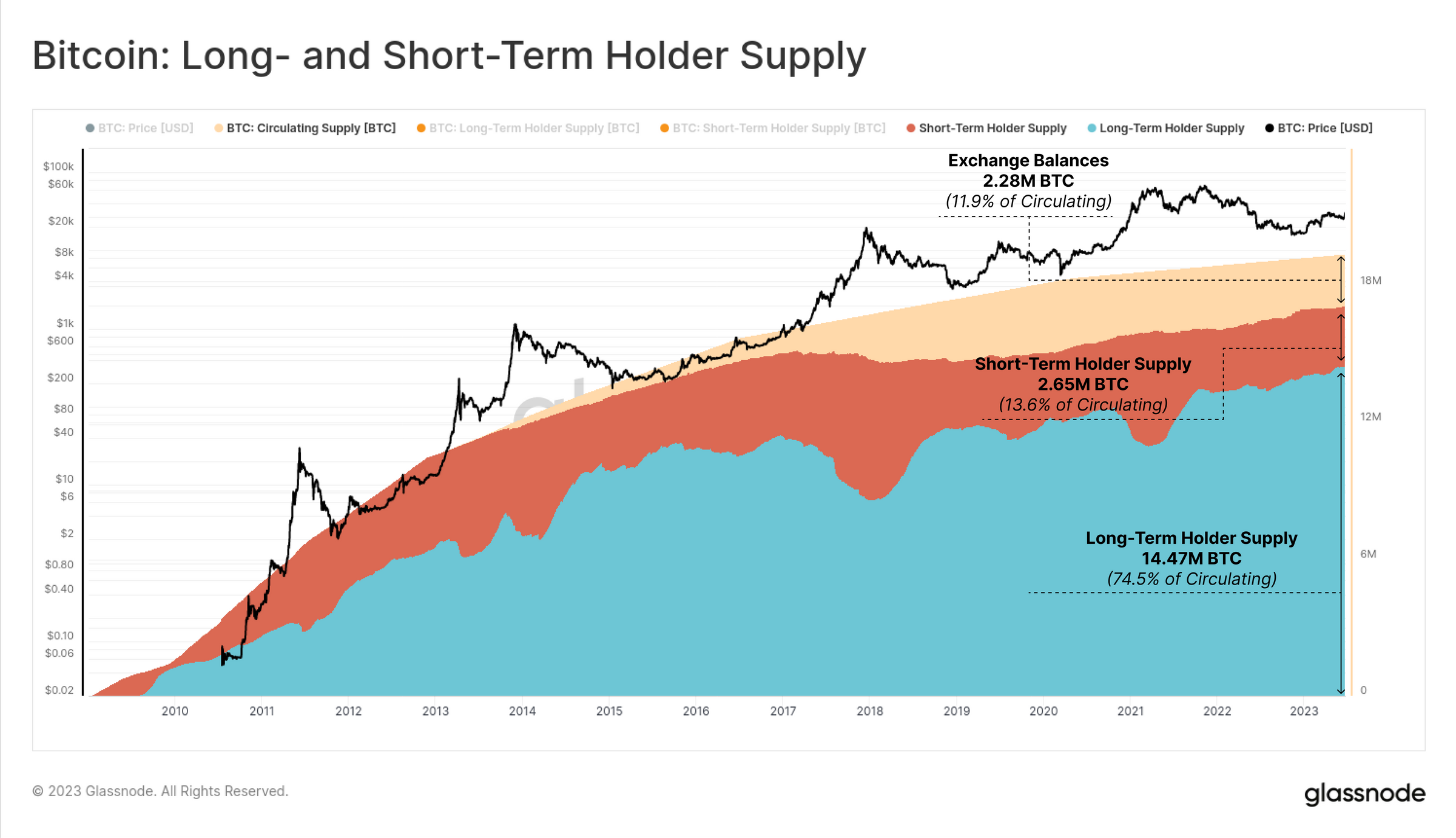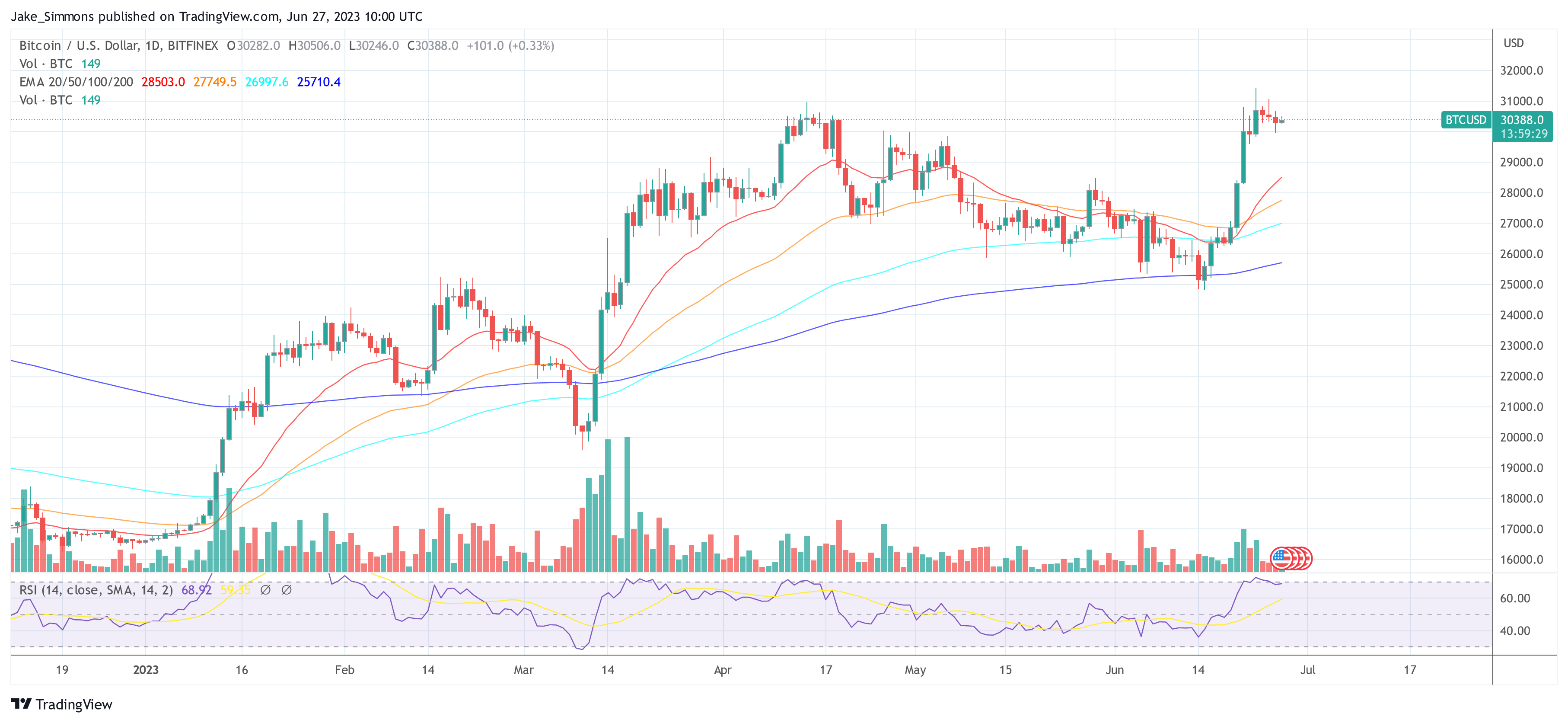The recent Bitcoin rally has led to speculation that the price could rise further with the introduction of spot ETFs. The arrival of ETFs, especially from reputable companies such as BlackRock and Fidelity, could boost institutional investor confidence and lead to a surge in the Bitcoin price. The one million dollar question, however, is: how high? Clues to answering this question can come from various metrics and data.
One such data point was provided yesterday by CoinShares’ Chief Strategy Officer Meltem Demirors via Twitter. As she writes, the Bitcoin spot ETF news is not the only story. Many of the largest financial institutions in the US are currently actively working to provide access to BTC and more. In total, there are more than $27 trillion in client assets waiting on the sidelines.

With BlackRock, the world’s largest asset manager has filed a Bitcoin ETF application. Rumour has it that the world’s number three, Fidelity Investments, is also flirting with a Bitcoin ETF. Bitcoin ETF applications from Invesco and WisdomTree (both top 10 ETFs) are a fact.
How High Can Bitcoin Rise? All-Time High? Quadruple?
If just a fraction of the $27 trillion in client money managed by the largest asset managers were to go into Bitcoin spot ETFs, the impact on price would be gigantic. Just 1% would amount to over $270 billion (rather more because not all Bitcoin ETF applicants are included in the chart). In comparison, the Bitcoin market cap is currently $590 billion.
As NewsBTC reported two weeks ago, the performance of the gold price after the first gold ETF in November 2004 could also be a metric that provides a glimpse into the future. The launch of the first gold ETFs led to a fabulous gold rally. While the price of gold was still at $400 at the time of approval, it reached $600 in 2006 and $800 in 2008. Seven years after approval, in 2011, gold reached its preliminary high of almost $2,000 (+359%).
Renowned expert Will Clemente commented via Twitter:
Shown below is when GLD launched, allowing easy access to Gold exposure for investors. If/when Blackrock’s (who has a 99% ETF approval) Bitcoin ETF launches (very similar structure to GLD), expect similar price action as it unlocks access to Bitcoin exposure for the masses.

As Bitcoin is the digital gold of the 21st century, it is also worth looking at the market capitalizations of both assets in comparison. While BTC stands at $590 billion, the gold market capitalization is around $12 trillion.
If Bitcoin were to gain just 10% of gold’s market share (around $1.2 trillion), this would be a doubling of BTC’s current market capitalization and, to put it simply, a doubling of Bitcoin’s current price. That this target is by no means impossible is shown by BTC’s all-time high of around $67,000 at the end of 2021, when its market capitalization was already around $1.2 trillion.
Another benchmark is the total market capitalization of the global stock market of over $100 trillion. Apple accounts for about 3% of this. The company is thus five times as capitalised as Bitcoin.
One factor that also needs to be taken into account when determining the price is the supply side. As expert Alessandro Ottaviani writes, BlackRock and Fidelity would only have to move 0.3% of their managed capital into Bitcoin to buy all existing BTC on the exchanges at the current price.
The on-chain analysis service Glassnode has published research on this. The analysts write that after a period of weaker relative US demand, there is a revival in 2023. This encounters a highly illiquid market.
Currently, there is a continued transfer of wealth to HODLers, while more and more coins are being withdrawn from exchanges. According to Glassnode, there are currently only 2.28 million BTC left on exchanges (11.9% of circulating supply), a short term holder supply of 2.65 BTC (13.6% of circulating supply) while 14.47 BTC are held by long term holders (74.5% of circulating supply).

All the above metrics and data suggest that Bitcoin is facing a huge bull run led by institutions. However, there is no guarantee for this. One thing to consider is that the US Securities and Exchange Commission could reject the Bitcoin spot ETFs despite BlackRock’s fantastic success rate.
On the other hand, BlackRock and others need to buy BTC on the spot market for it to have a direct impact on the price. But one possibility is that BlackRock could buy Bitcoin over-the-counter (OTC). For example, the asset manager could buy the BTC seized by the US government (over 200,000) over-the-counter.
This could lead to a “buy the rumor sell the news” event. But even if they bought over-the-counter from the US, this could be beneficial in the long run, as it means that the US government will no longer sell its BTC on the open market as it did in the past.
At press time, the BTC price stood at $30,388.









